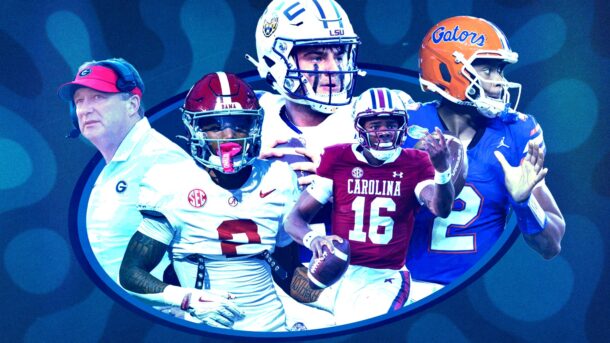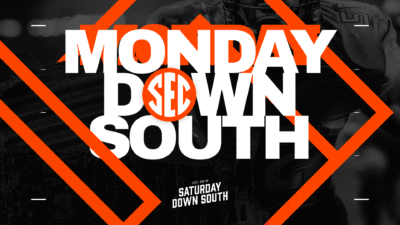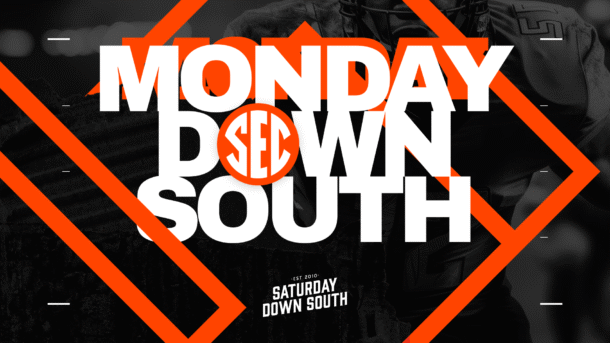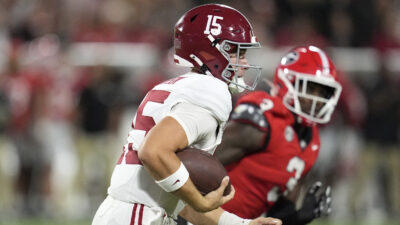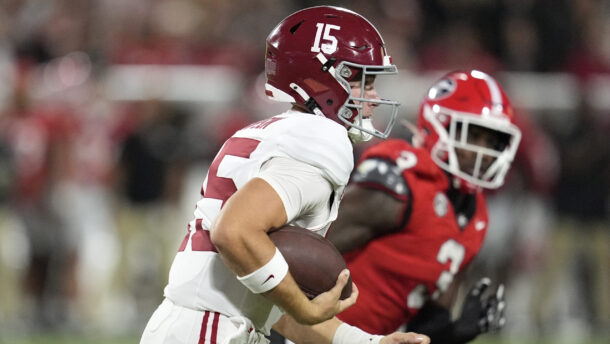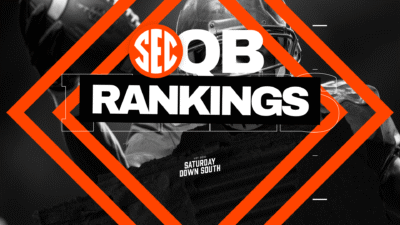
Metrics suggest LSU, Auburn, Alabama have country’s best offensive lines
By John Crist
Published:
As a member of the Football Writers Association of America, I get to vote for its All-American team on an annual basis.
Like most FWAA members, despite the fact that I do this for a living, I’m far from an expert when it comes to the offensive line. I played skill positions in high school and understand throwing, running and catching.
When I was a volunteer assistant coach at Florida High in Tallahassee, working specifically with the receivers, I spoke the language of offensive football rather fluently. Three-step drops vs. five-step drops, which defender to read on option runs, the finer points of the route tree — I even diagrammed some plays.
But then I’d immediately turn the whiteboard over to our O-line coach: “Find a way to block this for me, please.”
This week, my ballot for the FWAA All-American Team was delivered via e-mail. As luck would have it, the first position group I was asked to vote for was the offensive line. I’m sure I’ll procrastinate as long as possible.
Fortunately, my friends at Pro Football Focus — specifically Steve Palazzolo, who’s been a great resource in the past — have put together a metric for the offensive line with a grading system from 1-100. From how effective they are in the running game to how well they protect in the passing game, it’s a soup-to-nuts statistic.
Additionally, said metric is adjusted based on the opponent. Blocking Alabama State is a lot easier than blocking Alabama.

On Thursday, Palazzolo released his rankings of the Top 10 offensive lines in America through Week 10 of the regular season based on PFF’s numbers. The three teams at the top of his list happen to play in the SEC.
Despite being shut out at home this past Saturday, LSU is No. 1. Right behind is Auburn at No. 2, which should come as no surprise considering how well coach Gus Malzahn’s group has been running the ball lately. Then at No. 3 is Alabama, as freshman quarterback Jalen Hurts continues to run and throw with success.
The Bayou Bengals are sixth in the conference in rushing yards per game and tied for fifth in fewest sacks allowed.
“While the season has been disappointing as a whole for LSU, the offensive line has done its part,” Palazzolo said. “When adjusting for competition, the Tigers’ game against Alabama was not bad comparatively, as the Alabama defense has given up virtually nothing to opposing teams on the ground, while creating pressure at an incredibly high rate.”
Because LSU is only 10th in the league in total offense and 11th in scoring, it might come as a surprise that its O-line grades out as well as it does. Inferior quarterback play has surely held the unit back statistically.
“The interior of the line is what sets LSU apart, starting with Ethan Pocic, who ranks fifth among centers at 84.2 overall,” Palazzolo said. “Guard Josh Boutte has the nation’s No. 6 grade at 84.8 overall, including an 87.1 grade as a run blocker. That ranks third. The other guard spot is manned by Will Clapp, who checks in with a strong 78.4 grade, highlighted with an 86.4 mark in pass protection.”
Auburn, on the other hand, boasts the top rushing offense in the SEC at 299.8 yards per game. No matter how talented his running backs may be — transfers, dismissals and injuries be damned — Malzahn isn’t going to get that kind of production on the ground without a bunch of road graders in the trenches.
“The Auburn line does not boast any superstars, but they are solid across the board,” Palazzolo said. “Right tackle Robert Leff has the top grade at 81.1 overall, good for 20th in the country among tackles, while left tackle Darius James has taken a big step forward since we last saw him in 2014 with Texas to grade at 74.3. Both guards are solid, as Braden Smith grades at 78.2 and Alex Kozan comes in at 73.1, while Austin Golson’s move to center has coincided with Auburn’s offensive explosion in recent weeks.”
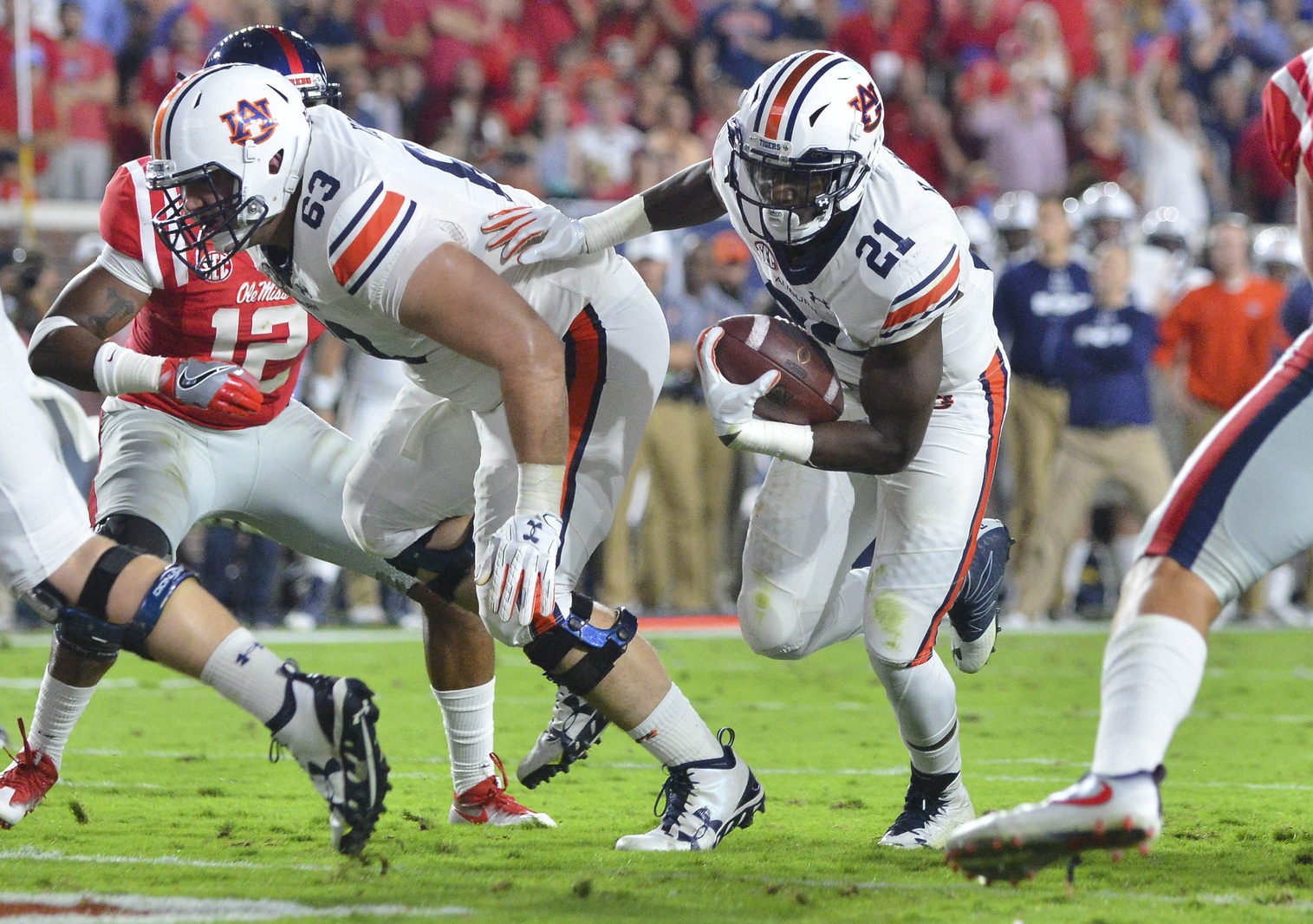
Kamryn Pettway and Kerryon Johnson (above), who have combined for 1,726 yards rushing this season, offer Malzahn different skill sets.
“The Tigers use a lot of misdirection in the backfield to keep defenses off balance,” Palazzolo said. “But ‘power’ is their staple run, and this O-line executes it at a high level.”
Much more balanced than Auburn, which is just 11th in the conference throwing the ball, Alabama is No. 2 on the ground and No. 7 through the air. The dual-threat abilities that Hurts brings to the table get most of the attention.
“The No. 2 pass-blocking team in the nation when adjusting for competition, Alabama has also been strong in the run game,” Palazzolo said. “Center Bradley Bozeman leads the way with his 84.0 overall grade, as he’s only allowed one pressure on his 300 snaps in pass protection. Left tackle Cam Robinson has not played up to his first-round hype, but he comes in at a solid 74.9 overall. Right tackle Jonah Williams has been the nation’s top true freshman tackle at 80.0 overall, including an 83.3 mark in pass protection.”
The Crimson Tide have only allowed 15 sacks, which is fourth best in the league. LSU and Auburn are tied for fifth with 16, but they both feature somewhat statuesque QBs. Mobile passers like Hurts tend to get sacked more often — Michael Vick went down a ton in the NFL — because they hold the ball longer trying to make a play.
“As a line, Alabama ranks eighth in the FBS in pass-blocking efficiency at 90.3,” Palazzolo said, “as they’ve only allowed 37 pressures on 300 dropbacks.”
Rounding out PFF’s Top 10 are Western Michigan, Pittsburgh, Western Kentucky, Tulsa, Washington State, Boise State and TCU.
John Crist is the senior writer for Saturday Down South, a member of the FWAA and a voter for the Heisman Trophy. Send him an e-mail, like him on Facebook or follow him on Twitter.
John Crist is an award-winning contributor to Saturday Down South.
